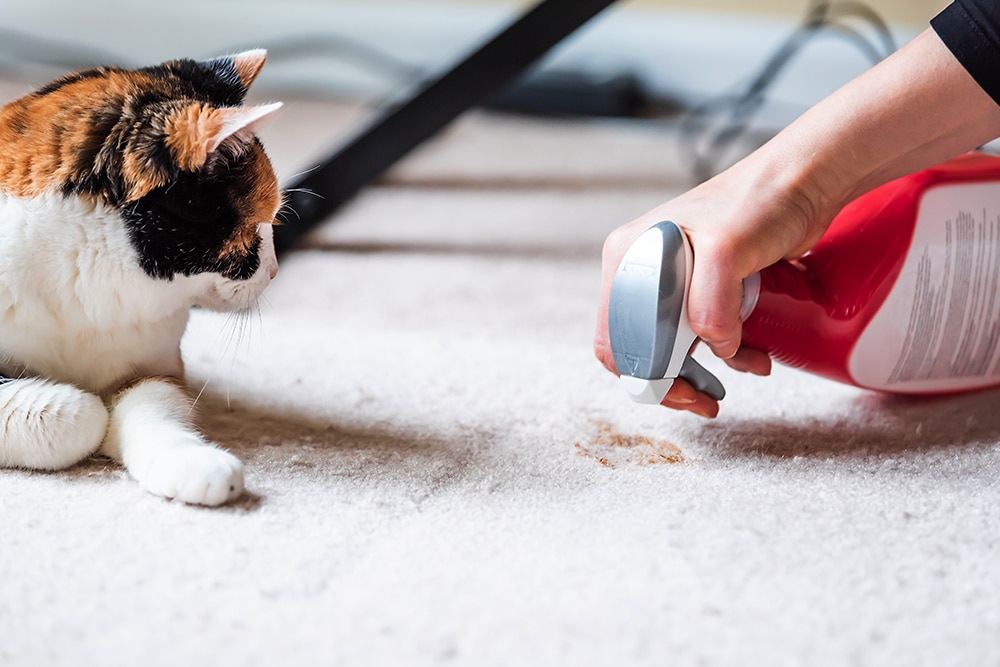The fresh clean smell of laundry, shining kitchen counters, and freshly mopped floors are closely tied to our perceptions of cleanliness. The truth is: fragrances have nothing to do with how effective a disinfectant or cleanser is and are likely to be covering up the smell of some very toxic chemicals. Even worse: fragrances are a tool for manufacturers to hide hundreds of ingredients without disclosing them, including harmful toxins that are dangerous for our health. Our increased focus on disinfecting during the pandemic means we have all been exposed to more chemicals than ever before, so we have to be especially careful to choose products that don’t put us at risk. Here’s what you need to know about fragrance so you can choose safer products – and what cleaning product manufacturers don’t want you to know.
Top Hidden Dangers of Fragrance
Fragrances Are Linked To Major Health Risks
Fragrances are considered hormone disruptors, neurotoxins, carcinogens, allergens and asthma triggers. In kids, this is especially concerning, because their exposure adds up over time. Cleaning chemicals, which almost always contain fragrances, are estimated to be causing 37% of childhood asthma cases. In adults, they’ve also been linked to some very scary health risks that we’ll get to below under the phthalates section.
Fragrance Ingredients Do Not Have To Be Disclosed By Manufacturers
Manufacturers are not required to list their fragrance ingredients on product labels, so they often just disclose the single word, “fragrance”, which can hide a cocktail of more than 100 toxic ingredients! Another term to avoid is “parfum.”
Fragrance Marketing Terms Don’t Mean What You Think It Does
How crazy is this: the term “unscented” means that a product does not contain fragrance for the purpose of scenting, but an unscented product can contain fragrance to mask the odor of other ingredients in the formula. So an unscented product can absolutely still contain fragrance and, therefore harmful ingredients.
The term “Fragrance-free” means that no extra fragrances were added to change the natural scent of the product, but there may be fragrances in the original formula and sneaky brands can say the fragrance ingredient is needed for another purpose in the formula and still call the product fragrance-free.
So, you have to be educated and read the label when it comes to avoiding fragrance. Here are 26 ingredients that the European Commissions’ Scientific Committee on Consumer Safety recommends scanning your labels for.
Fragrances Can Be Natural And Still Be Toxic
The term “natural” is not a regulated term that reflects any required testing for safety. Products that use words like “natural” are often just “green-washing,” an attempt to use verbiage and design tactics to make a product look non-toxic, eco-friendly, or otherwise safer to use. In reality, it means nothing and natural fragrances can be just as toxic as synthetic fragrances. After all, arsenic and other poisons are natural, too!
Fragranced Products Frequently Contain Phthalates
Phthalates and fragrance go hand in hand because phthalates help the scent of a fragrance linger longer. Phthalates can be found in all kinds of cleaning and even personal care products including moisturizer, soap, hair sprays, and perfumes, even nail polish. The problem is you won’t find them listed on labels, so they are difficult to avoid. Research on the reproductive and developmental impact of phthalates has found a link to genital malformations and undescended testes in baby boys and lower sperm counts in men. Three phthalates (BBP, DBP, and DEHP) have been banned permanently from toys and pacifiers for children under 3 because of the likelihood they will put these objects in their mouths. And get this: a recent study of over 5,000 adults linked phthalates to up to 107,000 premature deaths annually among adults aged 55-64.
Some more of the health risks associated with phthalates are:
• Cancer
• Birth defects
• Respiratory problems
• Behavioral problems in children
• Premature birth
• Damaged sperm
• Skin irritation and injury
• Eye irritation and injury
Avoiding fragranced products across all the products you and your family use is the best way to avoid phthalates, as well as avoiding ingredients with acronyms like DEHP, DBP, BBP, DINP, DIDP, and DnOP. In the cleaning category, you’ll find phthalates in fragrances, softeners, solvents, plasticizers, and PVC (polyvinyl chloride) products.
A Zero Fragrance Alternative: Force of Nature
With Force of Nature, you get the fresh, clean, odor-busting, germ-killing, effective-disinfecting scent made by salt, water, and vinegar. Our active ingredient, Hypochlorous Acid (HOCl) is a powerful and effective disinfectant that is as effective as bleach, but gentle enough to be family (and pet) friendly! Our solution has a pleasant, swimming-pool scent that dissipates quickly (and takes odors with it) and you get all the benefits of an effective 3-in-1 cleaner, deodorizer, and disinfectant without worrying about what’s in the overpowering smell of a toxic “White Cotton Sheets”-scented cleaning product! Force of Nature is EPA-registered and appears on the EPA’s List N for use against coronavirus, and kills 99.9% of viruses and bacteria. Ready to kick fragrance to the curb and start putting the power of Force of Nature to work cleaning, sanitizing, and disinfecting virtually every surface in your home? Learn more about Force of Nature, and shop for your Starter Kit.




